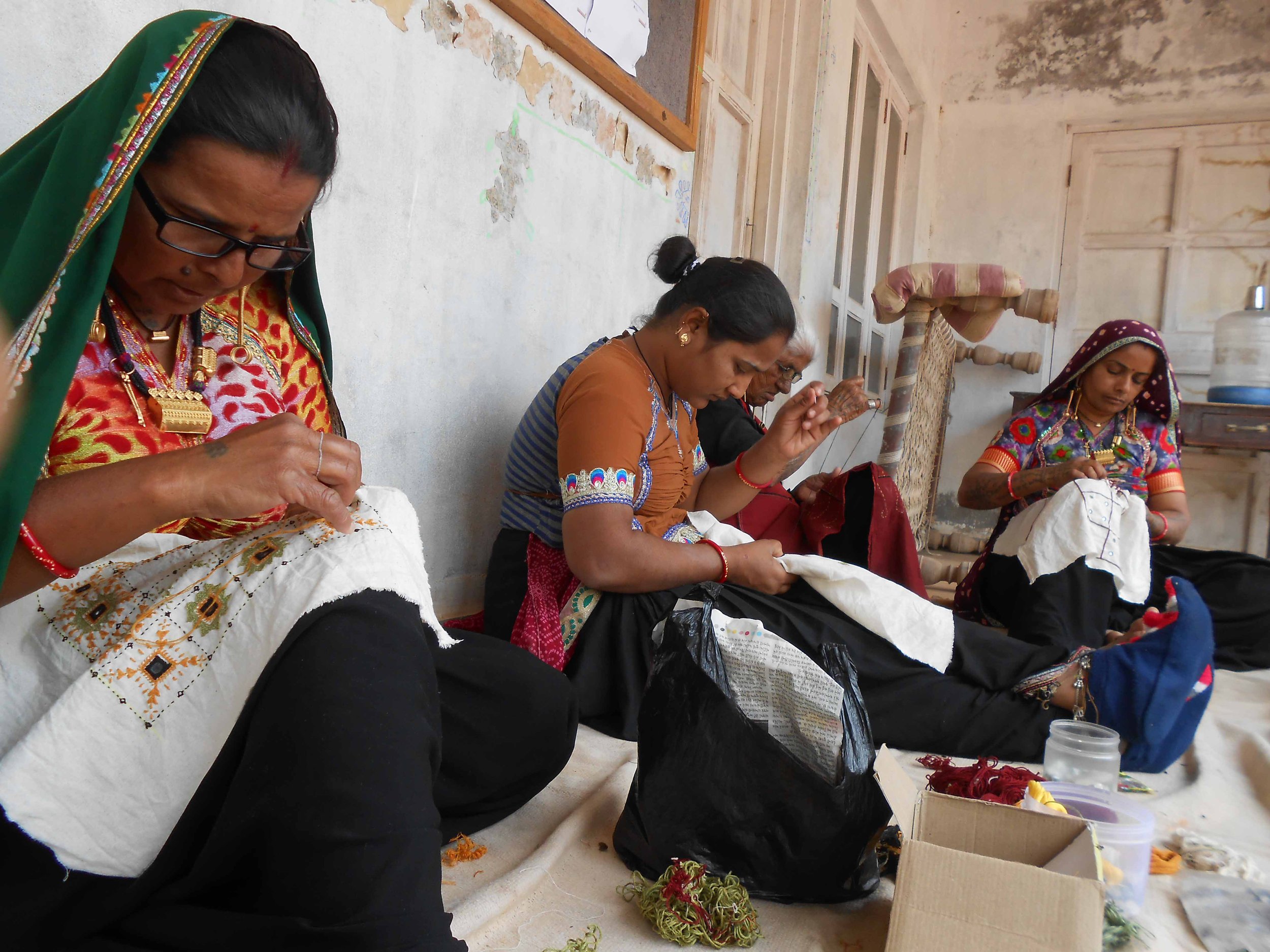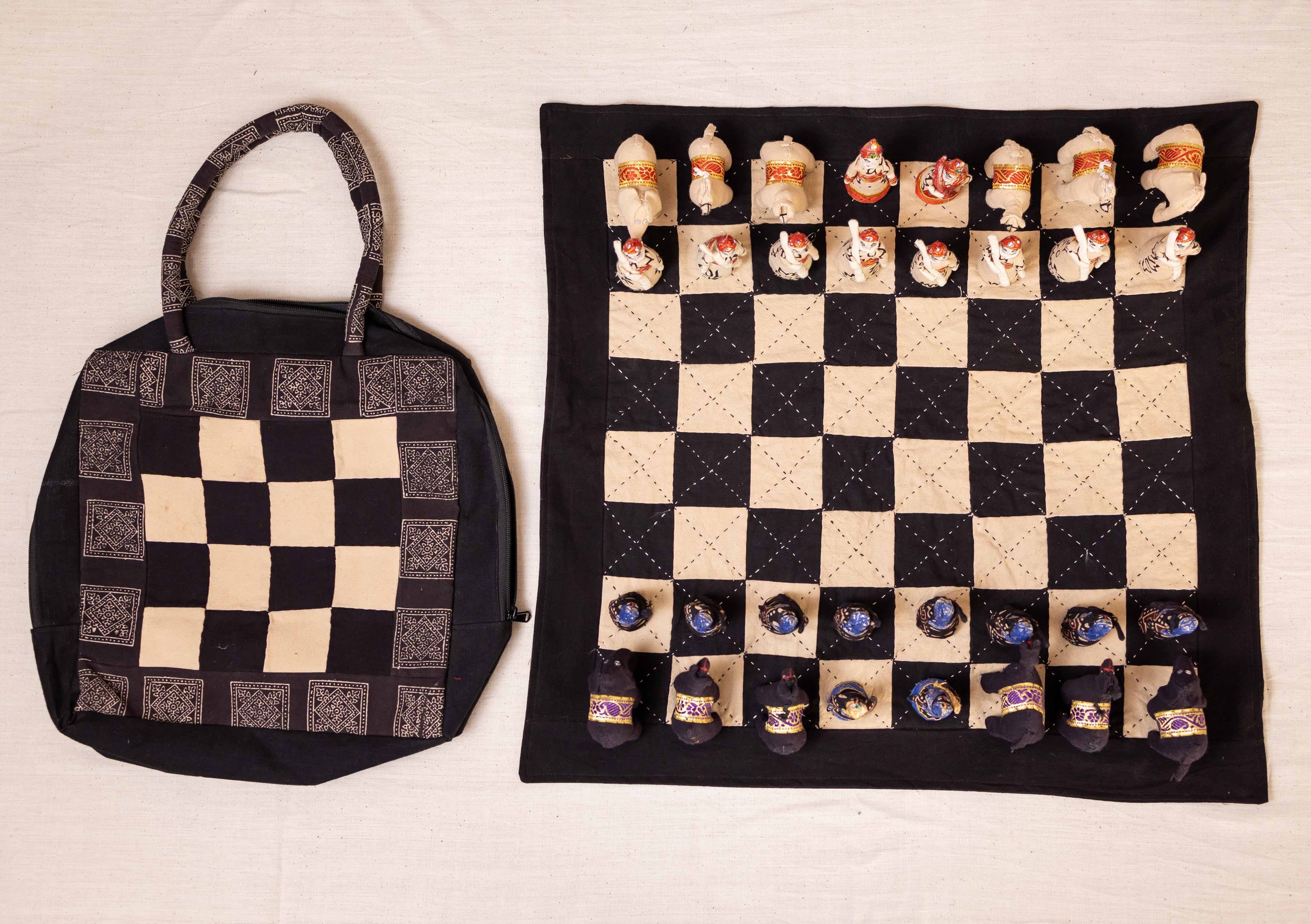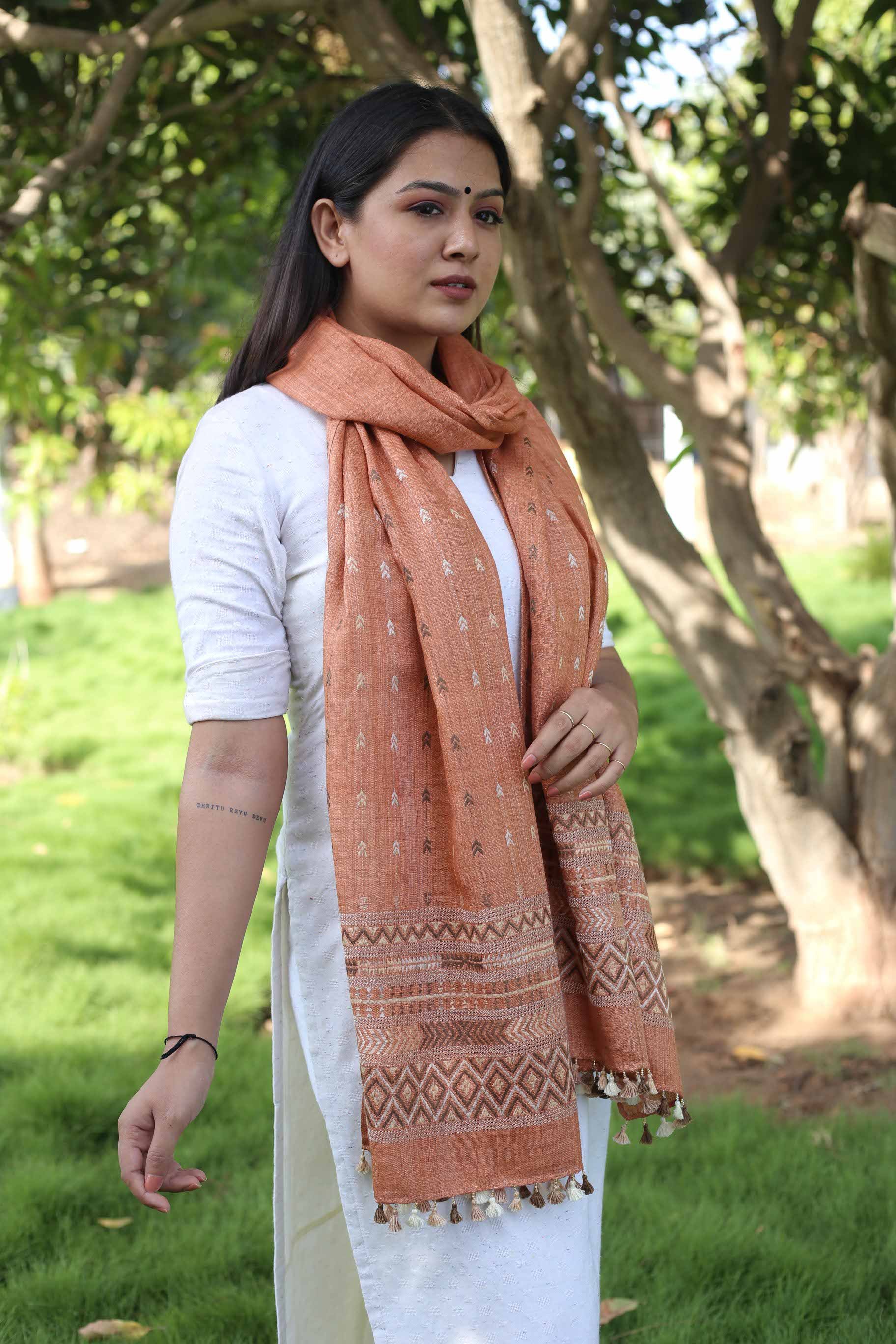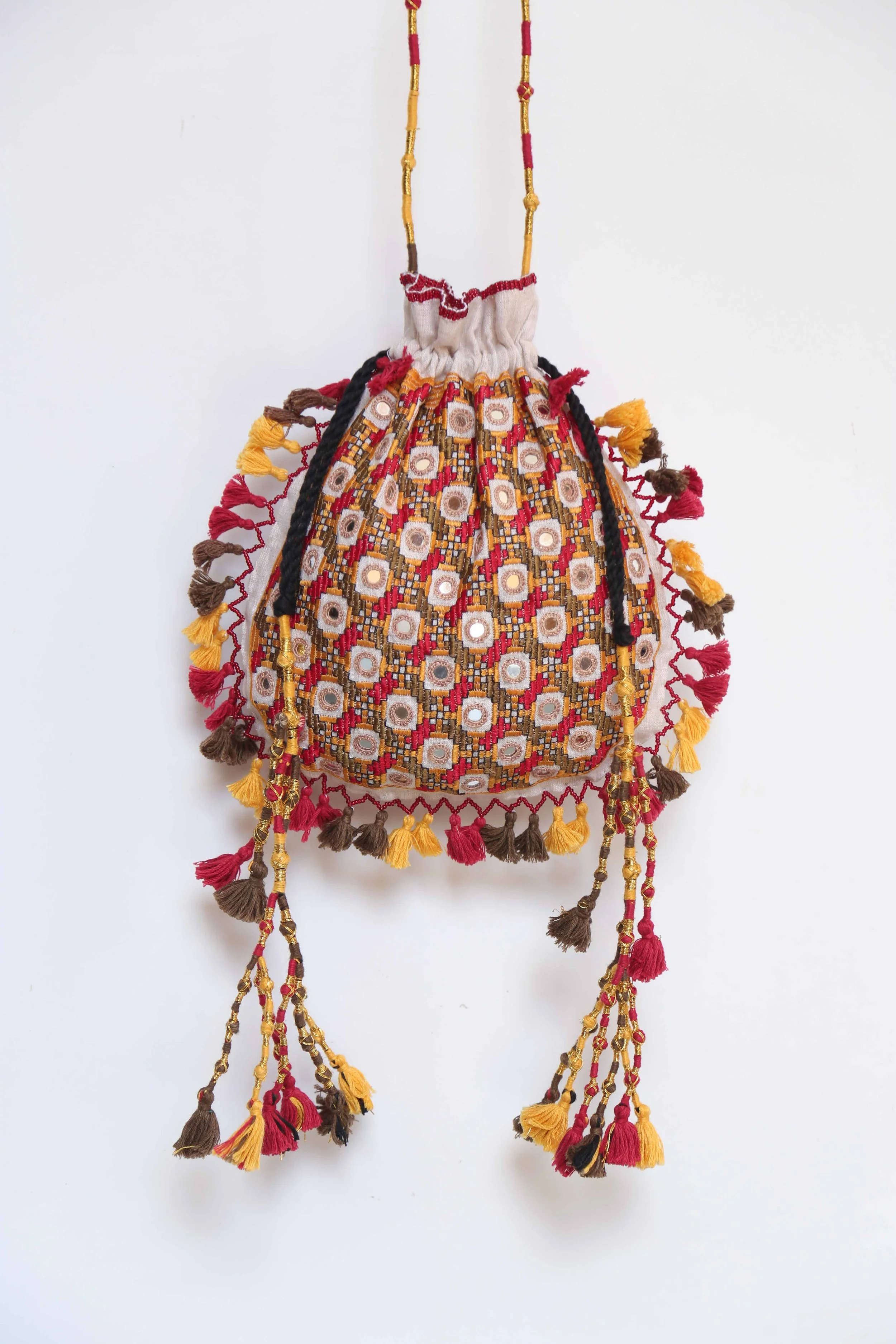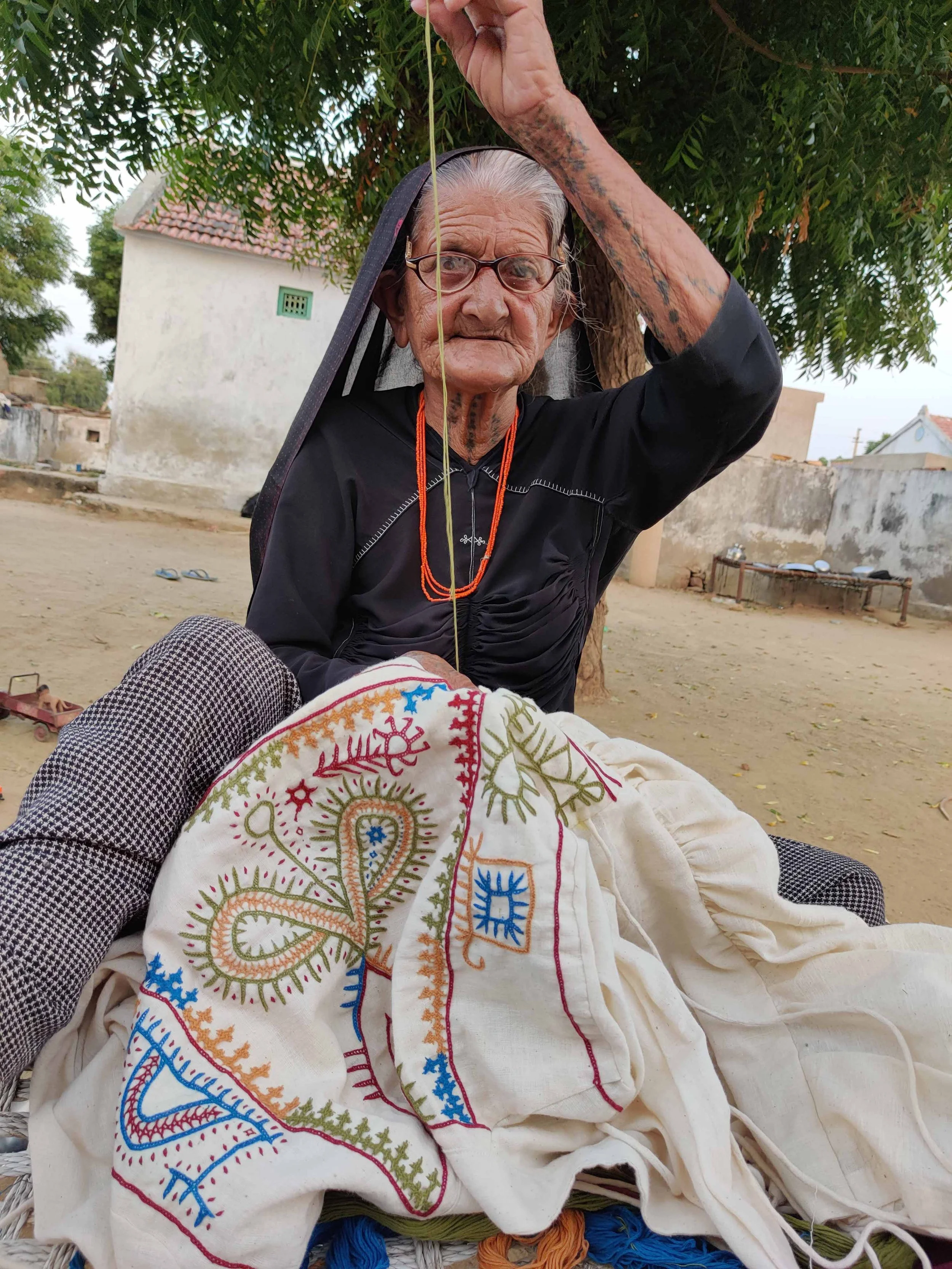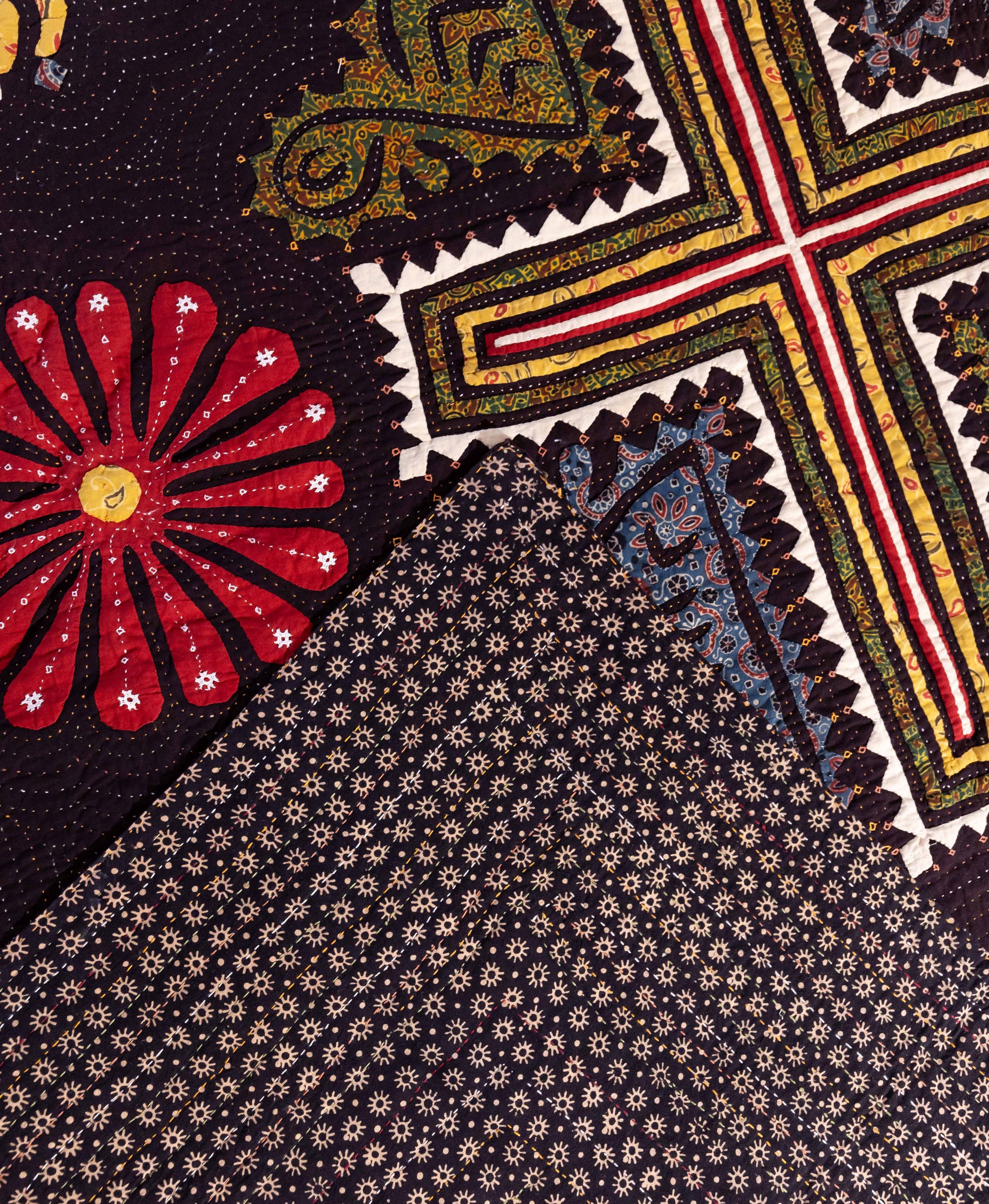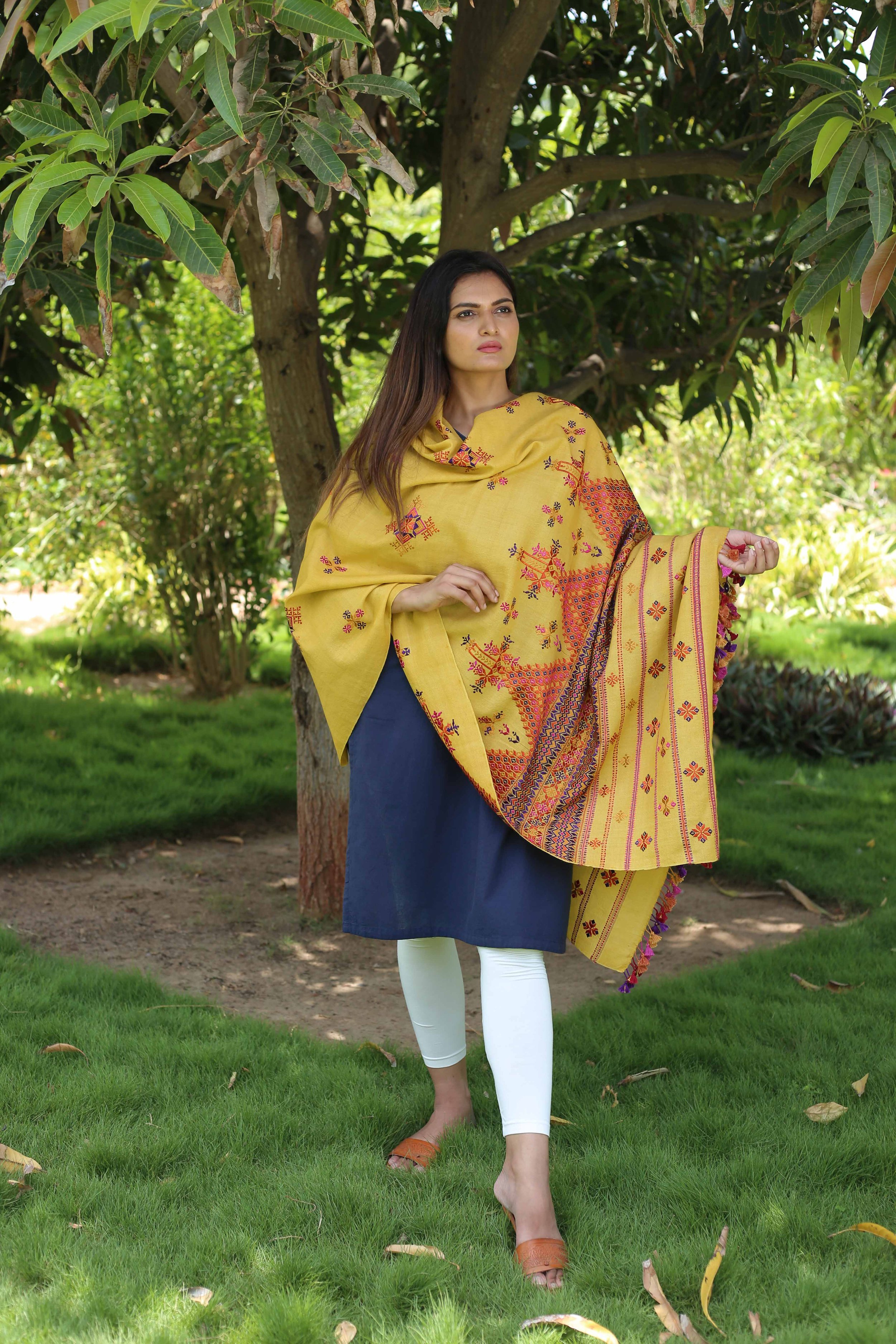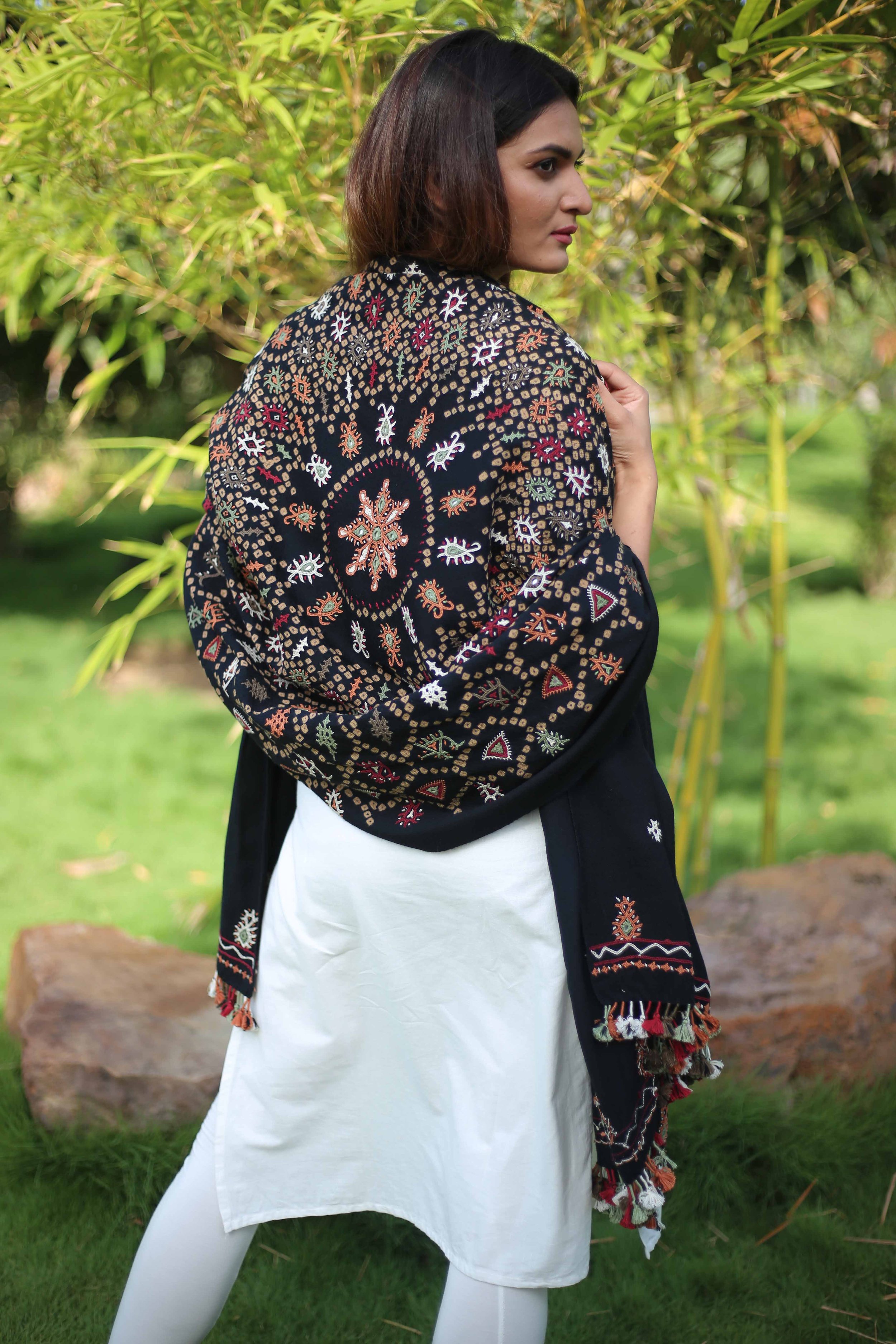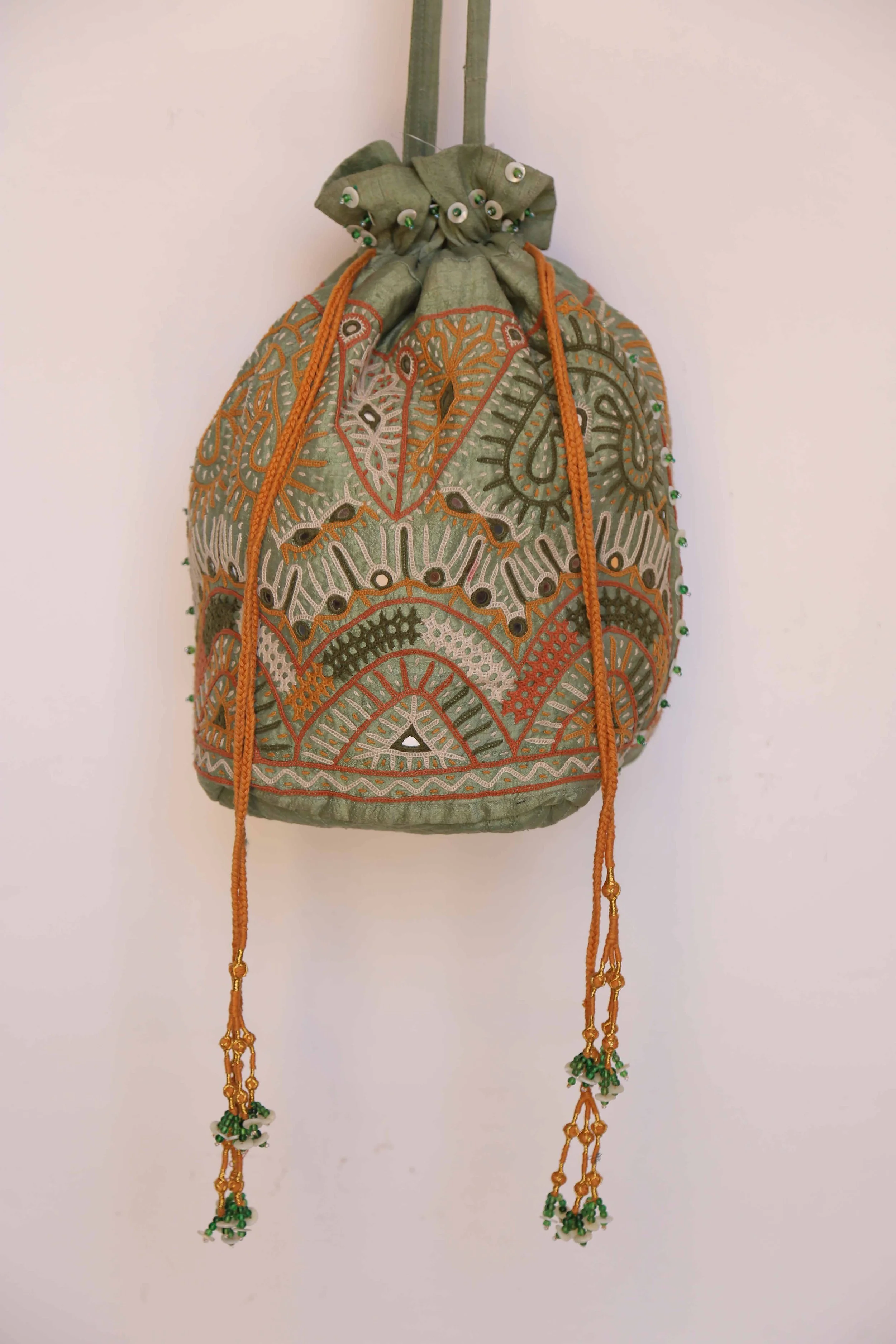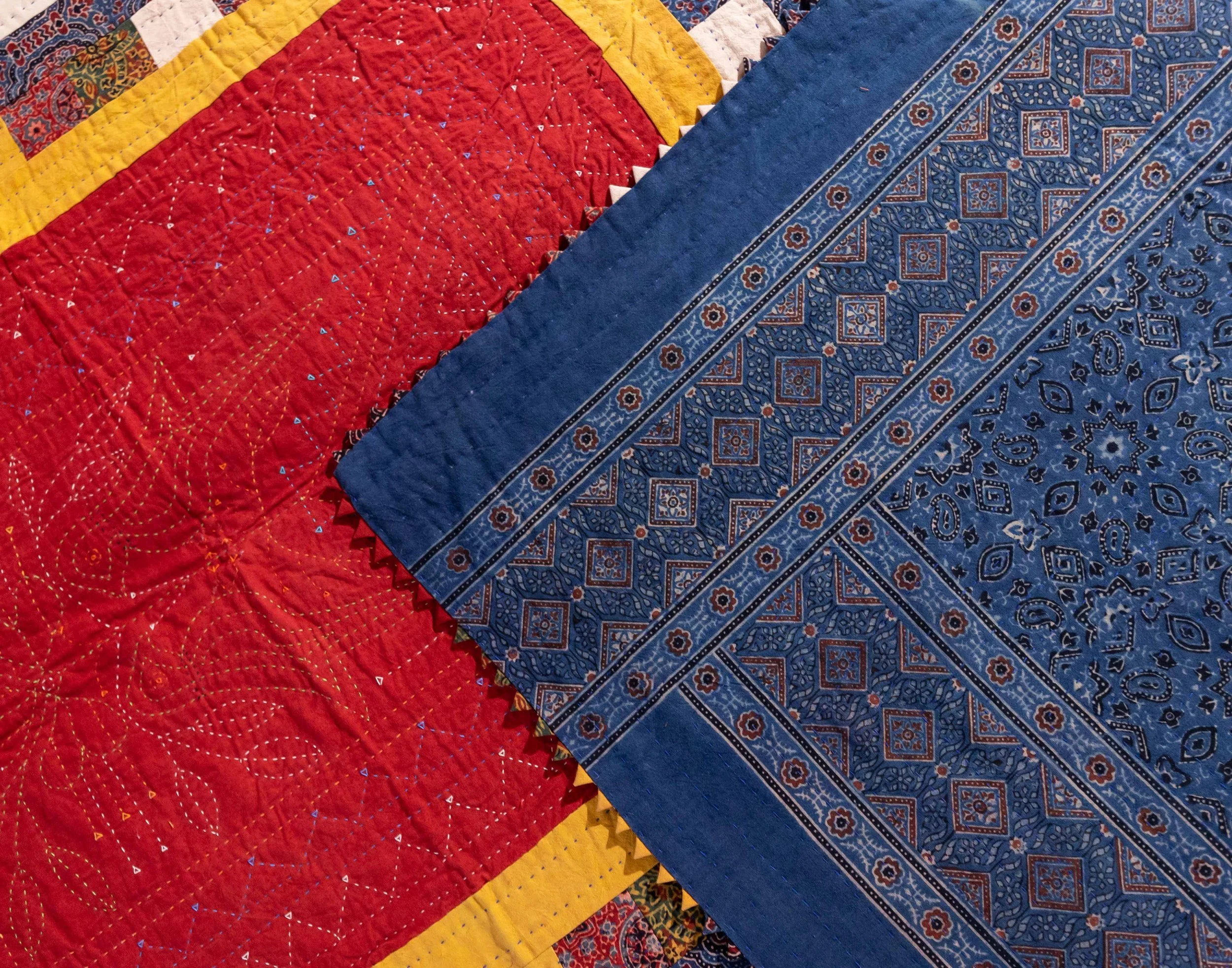Kala Raksha Producer Company Limited
Showing Off Kutch’s Regionally Specific Embroidery Techniques
Kala Raksha is the collective voice for traditional artisans from six different ethnic groups in Kutch who work together to revive their skills, build sustainable livelihoods, and preserve Kutch's cultural heritage. Kala Raksha is currently presenting six distinct embroidery styles: Sindh-Kutch regional styles of suf/soof, khareek, and paako, and the ethnic styles of Rabari, Garasia Jat, and Mutava. Not only does each embroidery style require specific techniques, but the motifs created are reflective of the artisan's upbringing and the historical and socio-economic factors of the region. For example, khareek pieces may be adorned with dates and mushrooms, rare desert delicacies. Soof textiles may allude to their relationship with camels as herders or their previous use of cowries as currency.
Suf/soof is a geometric hand-embroidery practice that requires sharp eye vision and acute mental clarity, as the motifs are never drawn on. For this reason, soof embroidery is typically given up by women once they are in their 30s. Khareek embroidery is a counted embroidery characterized by short raised bands of satin stitching arranged in geometric patterns. Paako is made up of very tight square chain stitches, it is said that paako embroidery will often outlast the background cloth. Rabari embroidery can be categorized into three distinct subgroups; Dhebaria, Vagadia, and Kachhi–each of these subgroups practices distinguishable embroidery using running stitch, backstitch, cretan stitch, chain stitch, square chain stitch, herringbone stitch, fishbone stitch, buttonhole filling, double buttonhole, and couching. Garasia Jatt embroidery is based on counted cross-stitch work. Unlike other counted thread work, the cloth used by them is not usually of an even weave, the warp threads being finer than the weft. Machi Kanto is used to join seams and thus does not appear on ghors or ghaggos.
Kutch is also renowned for their mirrored embroideries, which were traditionally stitched by village women for personal and communal use. Unlike many crafts, these mirrored embroideries were never sold as commercial products. The “mirror work” of Kutch can be understood as a myriad of styles, presenting a richly textured map of the regions.
Ilaben Bhanani, a traditional artisan from the Maru Meghwal community in the Sumrsar Sheikh village, is the Director of Kala Raksha. She began learning embroidery from her mother at the young age of sixteen and has since become an expert in the various types of stitches used in her community. At Kala Raksha, Ilaben uses her own designs and color combinations to create beautiful shawls and stoles. The primary objective of Kala Raksha is to promote and develop traditional folk arts and crafts of Gujarat in such a way that they are protected and preserved for future generations.

